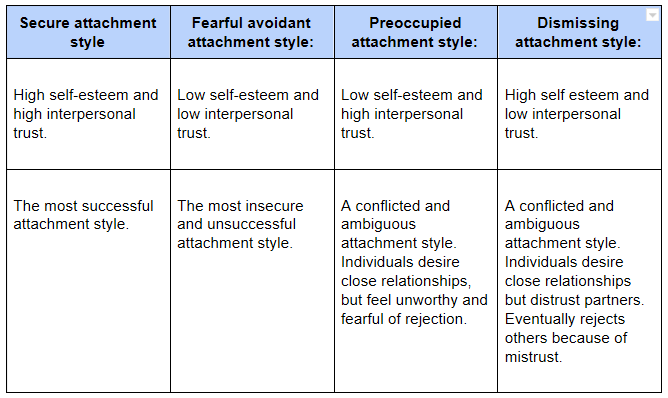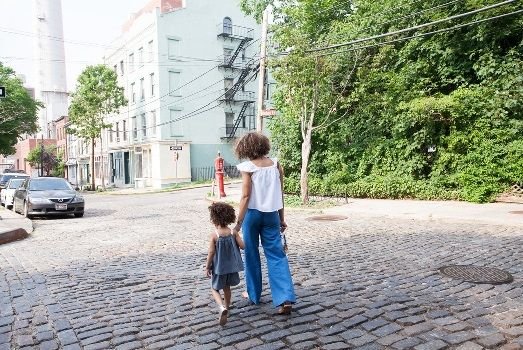Our first relationships:
As children we are encouraged to choose our friends wisely. We are taught which characteristics to pursue and seek in others. In an ideal world we are surrounded by people that teach us responsible and respectable behaviour. Our individuality would is fostered, encouraged and our immediate environments contribute to our personal growth as healthy individuals.

Unfortunately reality is mostly misaligned with the ideal. From a young age we are surrounded by and introduced to ambiguous personalities that provoke many anxieties and uncertainties from within us. The important question now is- how do these childhood relationships affect our relationships later in life?
Forming and maintaining relationships are one of our most basic human needs. Social scientists like Miell & Dallos (1996) have gone as far as to argue that a lack of relationships -or healthy relationships- could potentially lead to mental disorders. Loneliness often leads to feelings of depression, anxiety, unhappiness, pessimism about the future, self-blame and shyness. (Baron et al, 2009).
~
Loneliness is an unpleasant emotional and cognitive state based on desiring close relationships but being unable to attain them (Baron et al, 2009).
~
Our first relationships are with our caregivers (usually parents) and are critically important. These initial interactions are exchanges of facial expressions, body movements and sounds and are usually between mother and baby. Both mother and baby are very sensitive to the others’ actions (Murray et al, 1993). Reciprocity is crucial at this stage. It teaches infants that their behaviours elicit responses from others. And it is because of this that social psychologists are interested in early relationships- because basic interactions and relationships, early in life, affect and determine the nature of later interpersonal behaviour (Baron et al, 2009).
The quality of interaction between caregivers and infants determine future attitudes and actions in, and towards, relationships (Oberlander, 2003). It can be argued that there is a consistency in our interaction patterns that stretch through childhood into late adulthood.
Bowlby’s theory of interpersonal attachment styles:
Attachment styles explain how our earliest relationships affect and form us. Bowlby states that infants acquire two main attitudes that are influenced and determined by their relationships. How these attitudes turn out, affect how we attach to others socially.
These two attitudes are:

These two attitudes, in turn, determine our attachment styles as one, or a combination, of the following:

(Baron, A. 2009)
Although studies have shown that people change attachment-styles after certain experiences, many individual cases illustrate that attachment styles also remain consistent throughout life.
Attachment styles and relationship templates:
According to Psychodynamic Theory, relationships are based on templates we form during infancy. These templates closely resemble social psychology theory and Bowlby’s concept of attachment styles.
Templates form around whether relationships help to reduce our biological drives (unpleasant psychological and physical states). A caring, responsible and nurturing mother seeks to appease the needs of an anxious baby. The baby’s behaviour: screaming and crying are attempts to get the mother to reduce its negative feelings. If the mother reacts appropriately and reduces the baby’s unpleasant state, a secure-attachment style starts developing. The baby / infant realizes it is worthy of attention (self-esteem) and that people are trustworthy (interpersonal trust).

Photo by London Scout on Unsplash
As we age we need to navigate increasingly complex and sophisticated social interactions and dynamics, to appease increasingly complex biological drives (Trevarthen, 1980). Behaviour that reduces or frustrates (worsens) biological drives, determine the unconscious psychological processes that set the patterns for future relationships.
As we see from attachment styles. these patterns are determined by our earliest interactions. A child fake-cries as its only means to get attention from a caregiver. Negative behaviour illicit the desired responses. The child learns that negative behaviour can also get the reaction it needs. In this case, manipulation ( as an example) may become a defining trait of future relationships. Negative early experiences can create dysfunctional patterns that may repeat themselves.
Core Conflictual Relationship Themes (CCRT) and Transference:
CCRT explains that childhood and adolescent relationship templates also determine relationships in later life. This was studied by Luborsky et al whom established that individuals repeat certain relationship patterns throughout their lives. Templates affect how individuals choose relationships and how they interact and react within them.
Templates, thus, have the potential to result in ‘self-fulfilling prophecies’. Boys marry girls with striking resemblances (physically and behaviourally) to their mothers. People continuously choose abusive partners or some children just can't stop hanging with the bad-crowd.
This isn’t possible! I don’t do this!
Well, you might be surprised. Most people have never heard of these concepts or ideas. This means that they unconsciously collaborate (join up) with others to perpetuate their relationship themes. Psychodynamic theorists go as far as to state that we only engage in relationships that will satisfy our unresolved needs and desires (this might get really weird when you start critically analysing past and present relationship in your own life_.
Transference refers to the idea that we unconsciously redirect feelings associated with someone specific, to a completely different person (Howes, R., 2012).
Let's look at an example to explain the psychoanalytic concept of transference
A fictional case-study: ‘Z’:
Z enters rehabilitation for addiction. Z’s therapist, an older male, fits the CCRT (template) of her abusive older brother. Z unconsciously transfers unresolved feelings she has towards her brother, onto her therapist. Her sessions with the therapist, thus, evoke feelings that Z unknowingly relates to her brother. Even the therapist’s physical appearance (tall and skinny) accentuates Z’s CCRT.
Something about her therapist just annoys her. She experiences his assertiveness as being rude and derogatory. Z sees him as a 'know-it-all" and likes to "point out all her mistakes".
Although Z voluntarily entered rehabilitation, her recovery now suffers due to her anxieties and fantasies about not being good enough, not being able to change, etc. Anxieties and fantasies related to her brother. Brother-to-sister interactions frame the direction and dynamics of Z’s client-to-therapist relationship.
Z’s therapist, well versed in counselling and psychology, realizes the transference issues and slowly but surely brings these issues into Z’s conscious mind. This allows the therapeutic process to start.
In conclusion:
Considering what has been discussed we need to ask how much influence we truly have over our relationships. To some extent it is evident that our choices are limited by internal (mostly unconscious) psychological processes and some external social factors. Luborsky et al study on CCRT lead us to wonder how much of a say we truly have.
Therapy can help bring these unconscious processes to our conscious awareness but it remains the individual's responsibility to question his / her relationship choices and behaviours, and remain self-reflective and self-critical. It is possible to identify these patterns and actively work towards changing them.
It seems that sometimes our inherent need to belong and socialize overpower our rationale: bad, even toxic relationships are better than feelings of loneliness.
Sources:
Elliot Aronson: The Social Animal, Palgrave Macmillan, 10th revised edition, 2007.
Baron, A., Nyla R. Branscombe, Donn R. Byrne (2009) Social Psychology: 12th Edition. Pearson International Edition.
Dallos, R. (1996) Creating Relationships, in Miell, D and Dallos, R. (eds.) Social Interaction and Personal Relationships, London, Sage / The Open University.
Howes, R. (2012) A Client’s guide to Transference. psychologytoday.com/blog/in-therapy/201206/clients-guide-transference. Accessed: 24/2/2018.
Radley, A (1998). Relationships in detail: The study of social interaction, in Miell, D. & Dallos, R.

Question: Can you identify any patterns in your personal life?
I know for a fact that I have always dated women who are uncannily similar to my mother. Although I have a good relationship with my mom, the irony is that my romantic partners usually possess her negative characteristics, too. 😝


Being A SteemStem Member
Follow me for upvotes | Send 0.200 Steem or 0.200 SBD and the URL in the memo to use the bot for a resteem and to get over 5 upvots
😝
You got a 7.39% upvote from @minnowvotes courtesy of @rionpistorius!